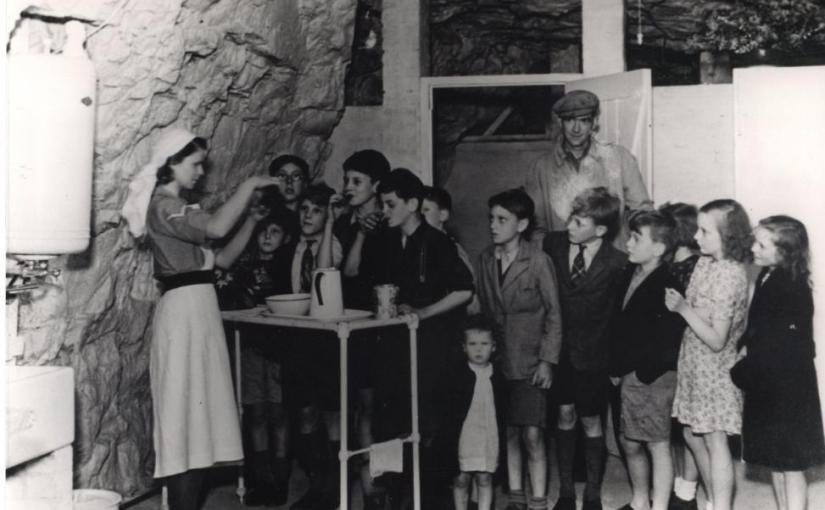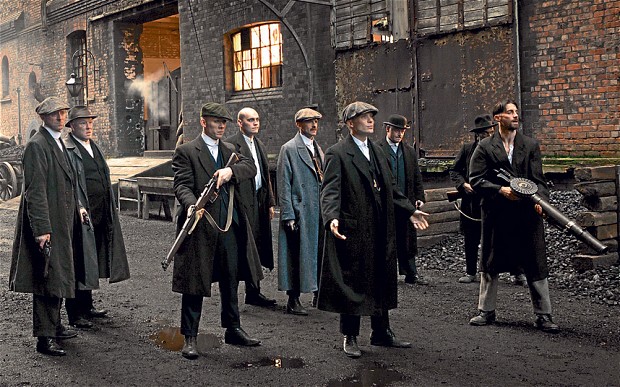During the First World War attacks on England from the air came in the form of Zeppelin raids during 1914 and 1915 and, by 1917, twin engine Gotha bombers. On one day in mid June of 1918, eighteen Gothas attacked London in broad daylight and caused 162 deaths, so it can be of no surprise that aerial bombardment quickly became a real concern for the nation.
As the British public began to seek underground shelter, arrangements were also made by British museums and galleries to move some of their most valuable artefacts out of the danger zone.
Items from the British Museum were moved to the National Library of Wales, underground strongrooms in Bloomsbury, and into the unfinished Post Office Underground Railway at Holborn. The GPO tube also offered shelter to artefacts from the Tate Gallery and the National Portrait Gallery.
At the end of the war these artefacts were returned to their rightful homes, but the threat to the nation’s museums and galleries was not forgotten.
In July 1933—just five months after Hitler was elected Chancellor of Germany—discussions were being held as to what should be done to protect the nation’s treasures should war break out again.
The task fell to the Museums and Galleries Air Raid Precaution Committee. They began by drawing up a list of fifty country houses that could safely accommodate a large volume of evacuated works and by the end of 1934 had an agreement in place with the London Passenger Transport Board to make use of disused tube tunnels.
Aldwych Underground Station opened as Strand Station in 1907, but saw such low passenger numbers that it was considered for closure in 1929, and again in 1933. With the start of the Blitz in September 1940, the station was closed and partly fitted out as an air-raid shelter.
It wasn’t just the people of London who took shelter down in the tube. Just as in the First World War, the London Underground would play a vital role in keeping the nation’s valuables safe during wartime.
On Friday 2nd September 1948 two lorries carried 100 tonnes of Elgin Marbles to Lillie Bridge depot in Kensington. From there the Marbles were transported by railway wagon to a disused tunnel at Aldwych.
How protected the Marbles, and the members of the public, actually were down in the station is debatable (direct hits to stations in Balham in 1940 and Bank in 1941 resulted in hundreds of deaths).
In 1941 Sir John Forsdyke (Director and Principal Librarian of the British Museum) complained to the Treasury about the poor conditions to be found down in Tube:
Accommodation in Tube Railway stations and tunnels was provided in good time, and this is satisfactory as far as it goes, but it does not go very far. The kind of material that can be kept in a tube tunnel is limited to what is waterproof. The humidity of the tubes is normally too high, if electric power is cut off it will rise to saturation point, and even with watertight doors there is a risk of flooding.
Nevertheless, the Elgin Marbles remained hidden down in the underground until the winter of 1948 when the first of the marbles was recovered and moved through Aldwych station in sight of the public, causing much press attention. Over time all of the sculptures were ferried back to Lillie Bridge yard and subsequently taken by lorry back to Bloomsbury.
It is undoubtedly a good thing that the Marbles spent the war hidden away in the underground, for the British Museum suffered considerable bomb damage, including the Duveen Gallery where the Marbles had been exhibited before their evacuation.
Read more about how Britain’s Art survived the Blitz in the rather excellent Saving Britain’s Art Treasures, by N J McCamley
Click here to sign up for my newsletter and get twice monthly updates, fiction, offers and sneak previews of new writing.


